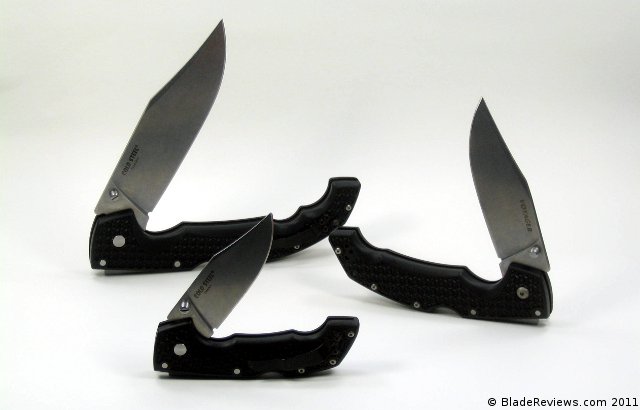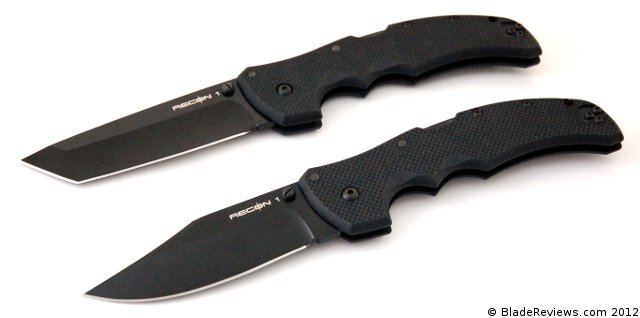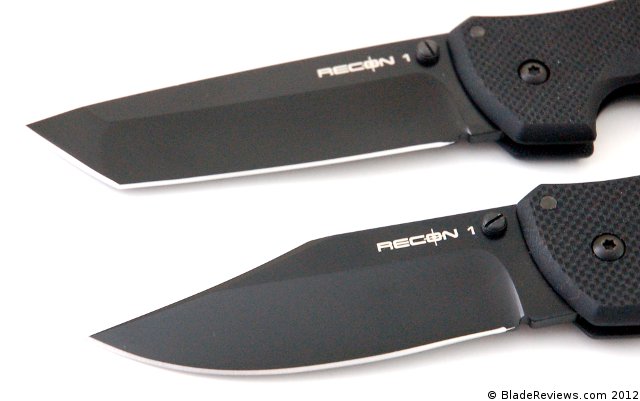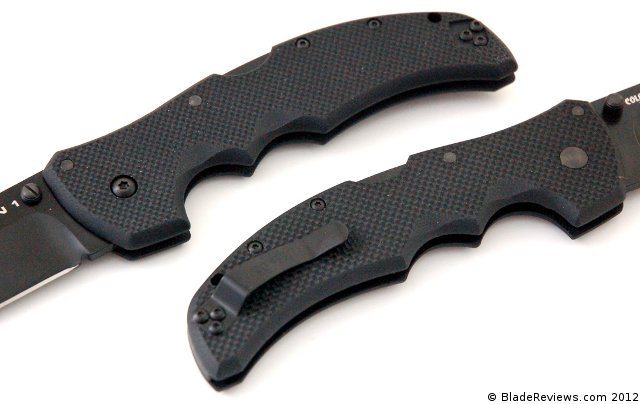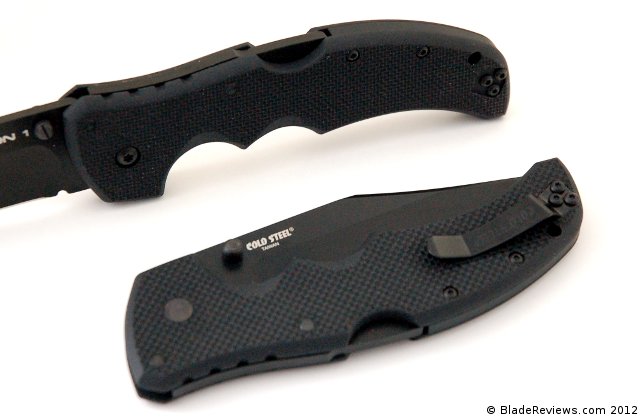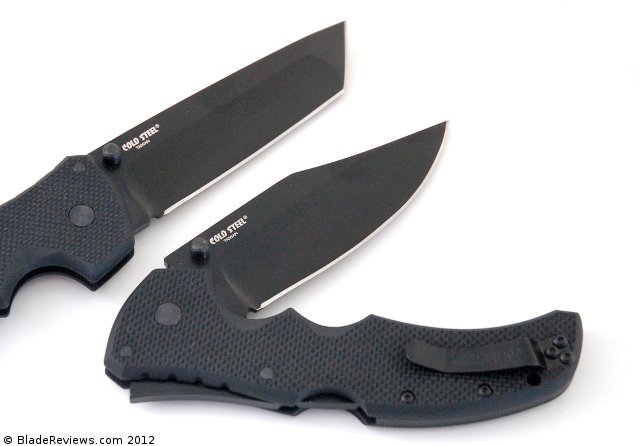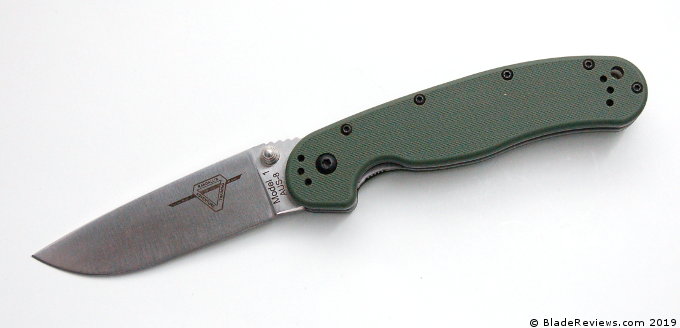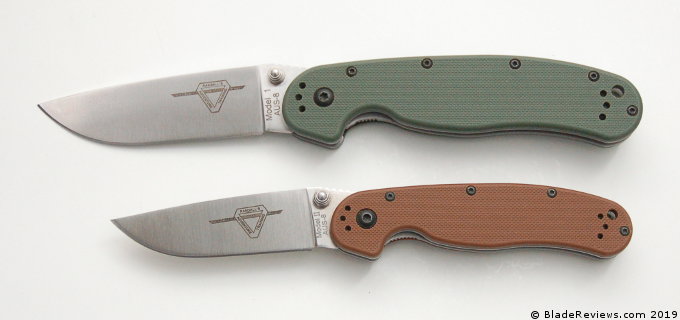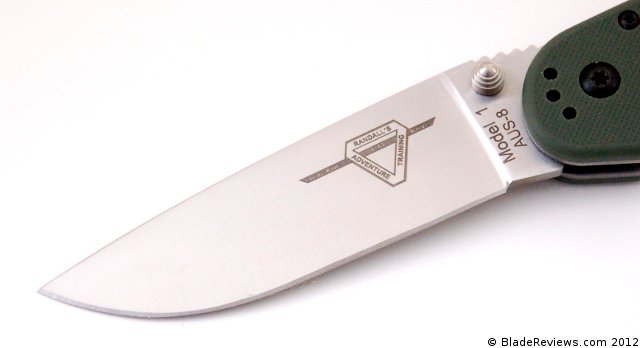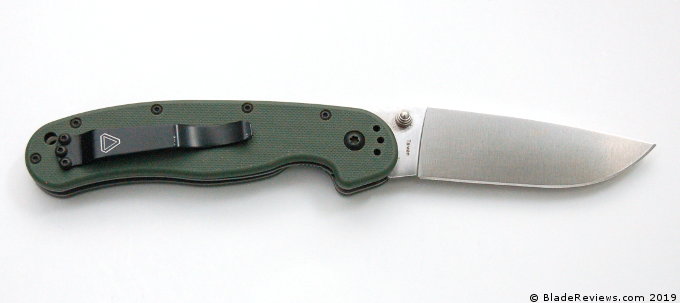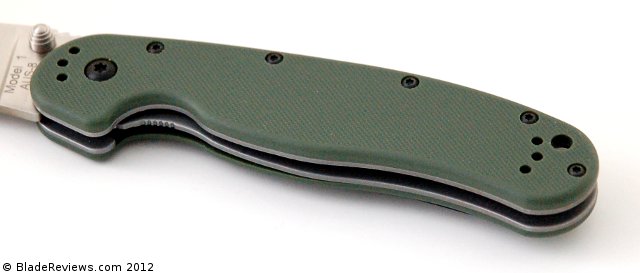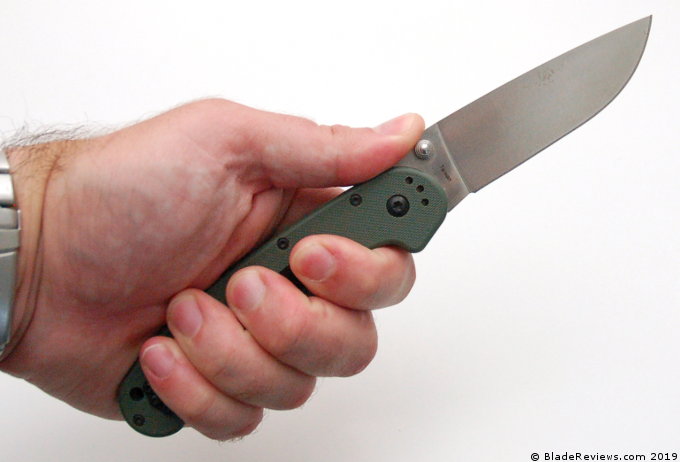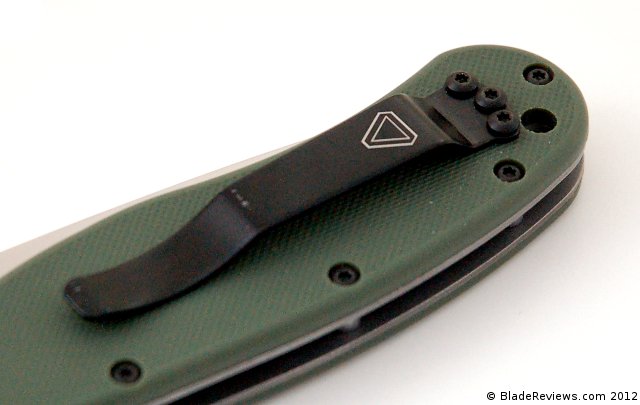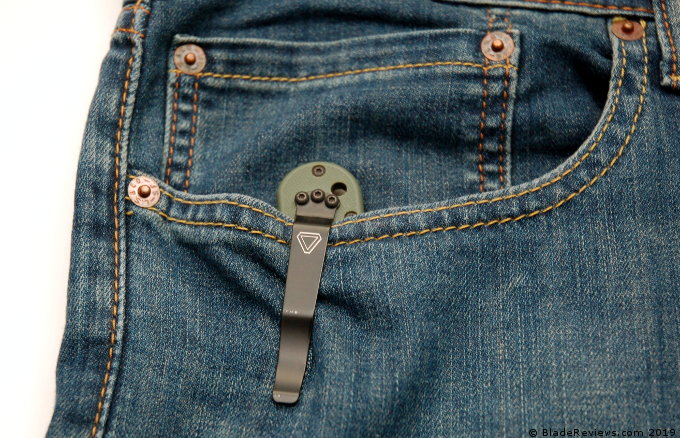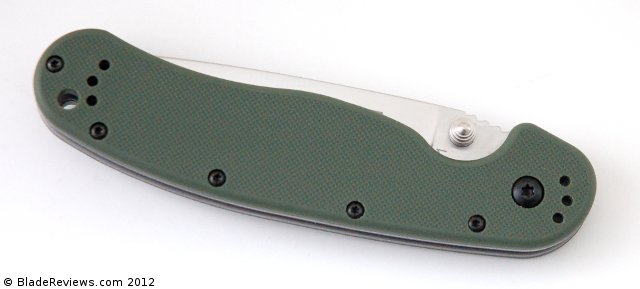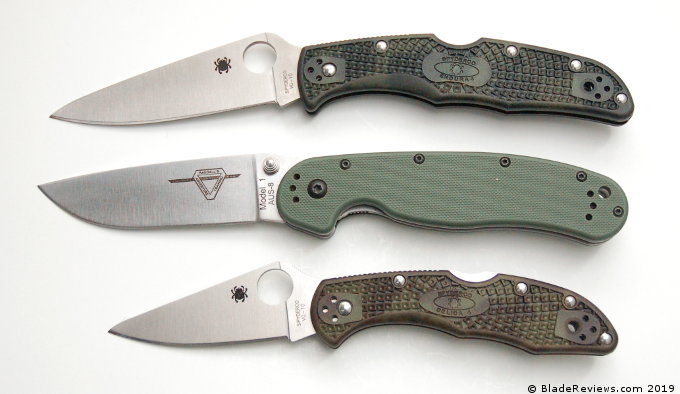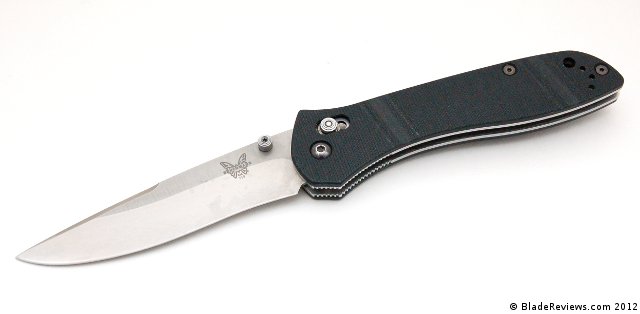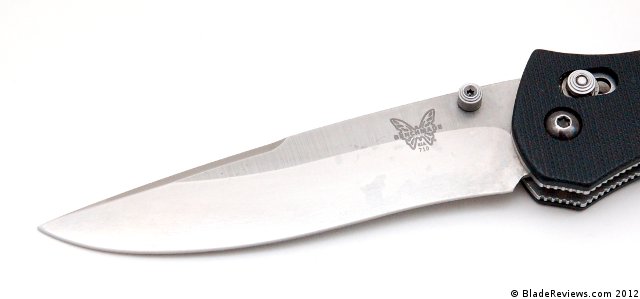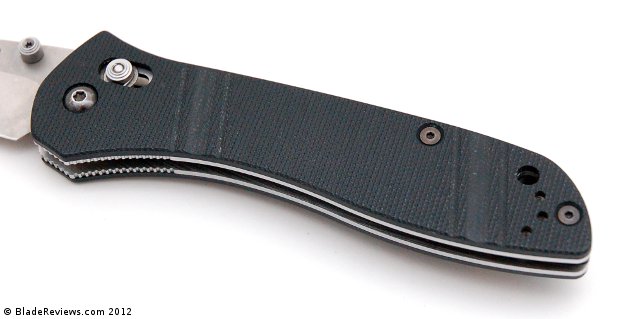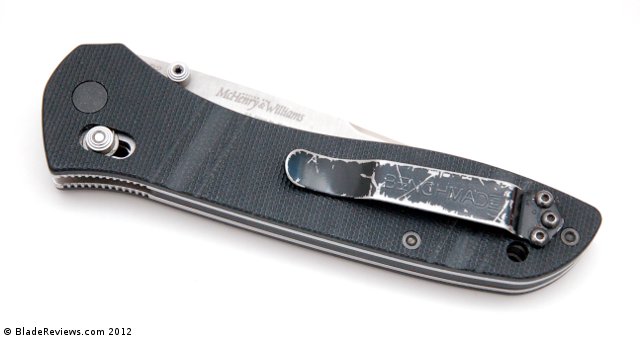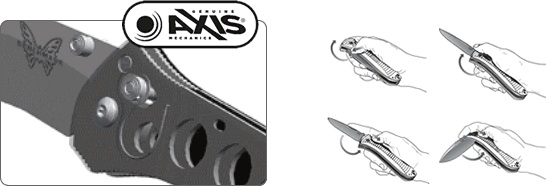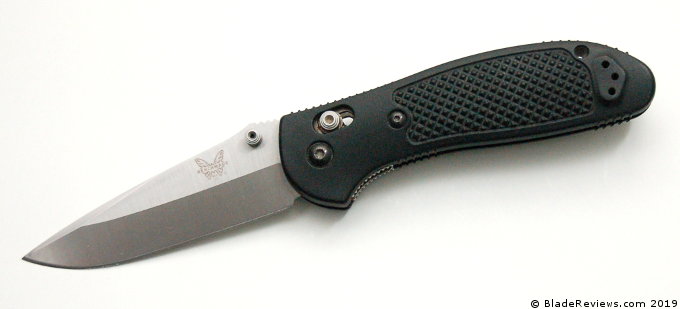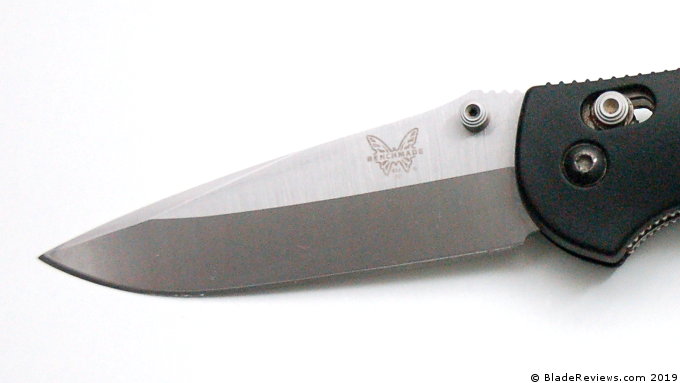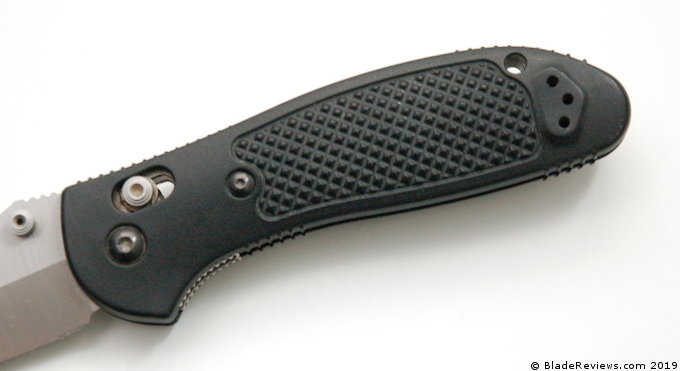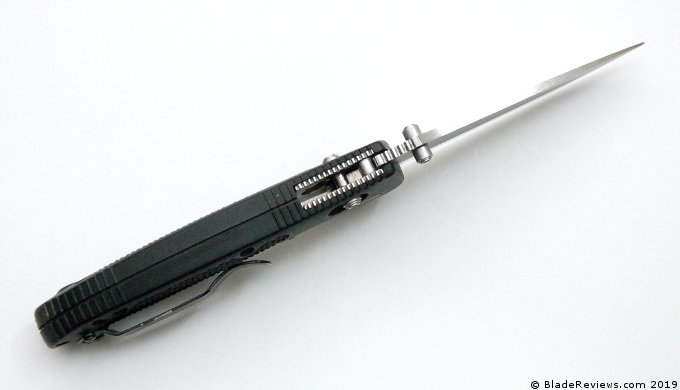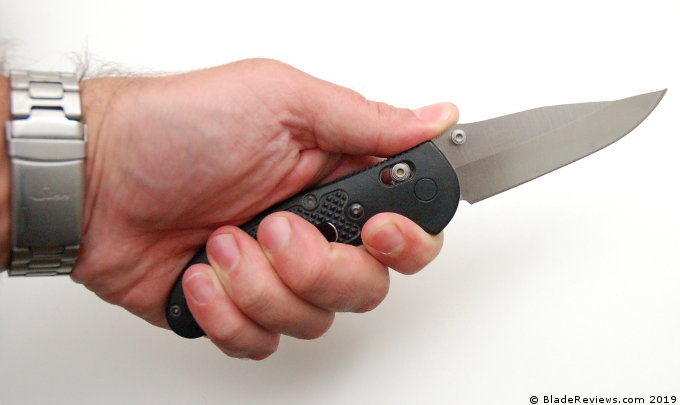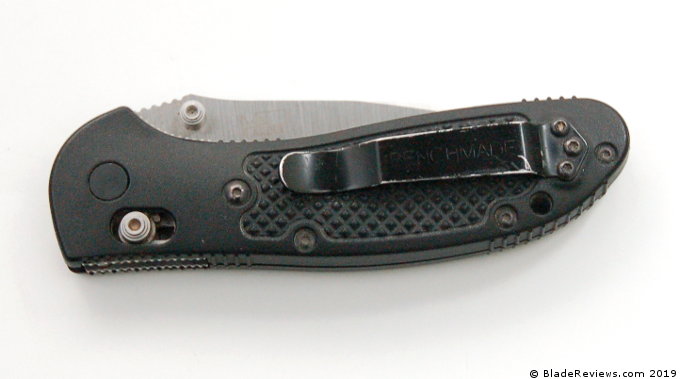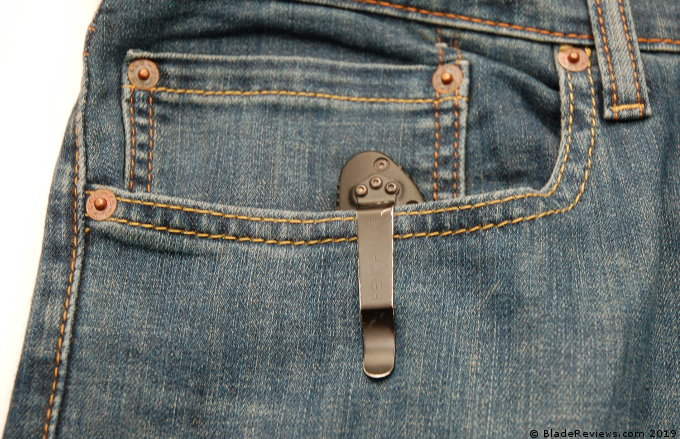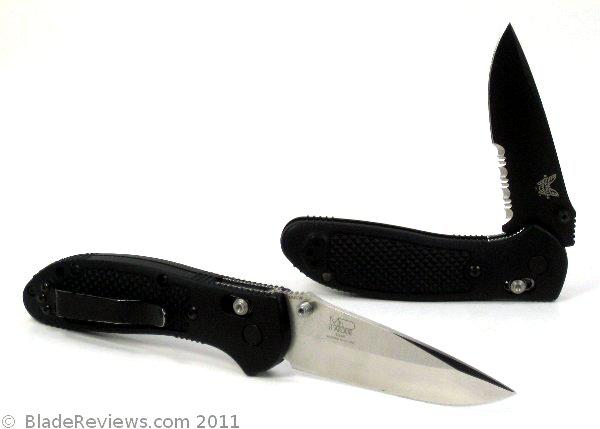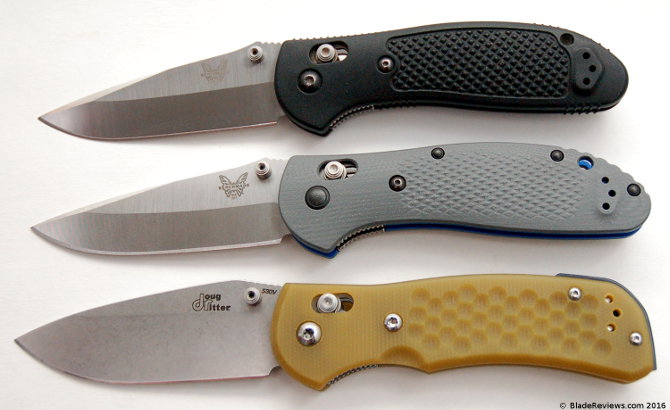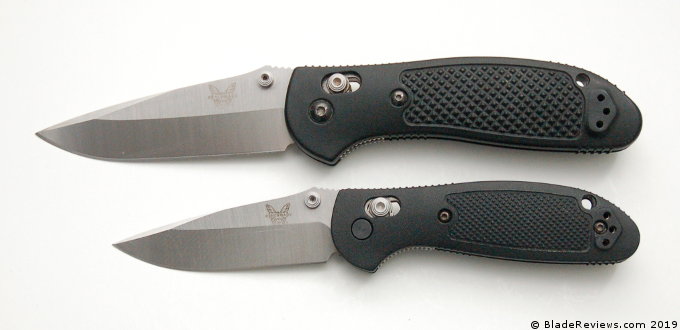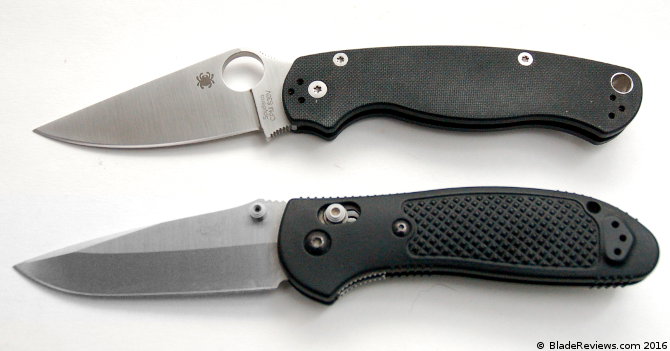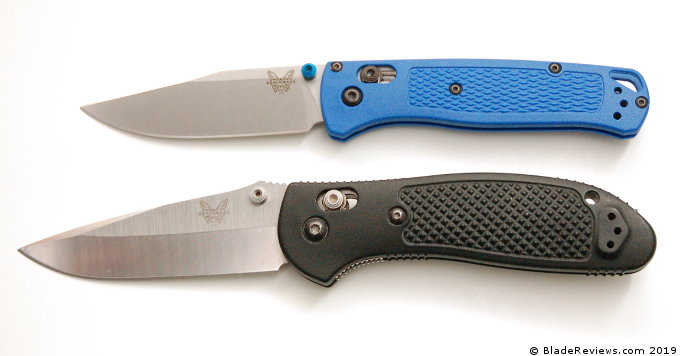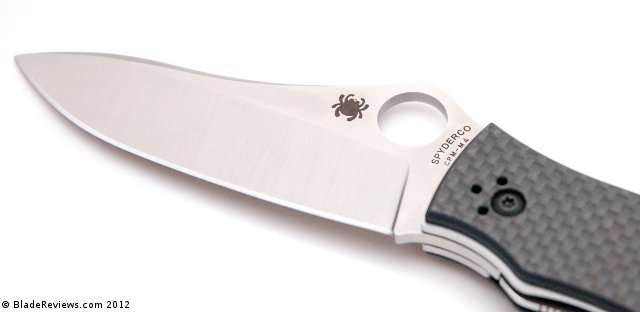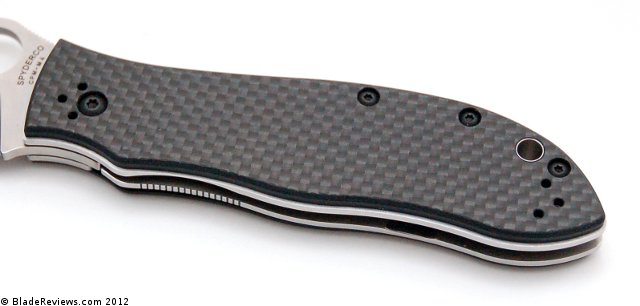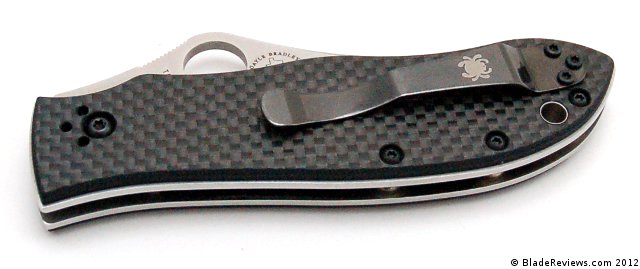Last Updated: February 25, 2018
New in 2011, the updated Cold Steel Voyagers took the knife world by storm. There was a lot to like about the original CS Voyagers, but as technologies advance old classics need updating. And I gotta say, the new version really packs some nice improvements. Lighter, faster, with better locks and beautiful details – there is a lot to love about these knives. With 3 sizes, 3 blade shapes and the option of fully or partially serrated edges there is something for everyone.
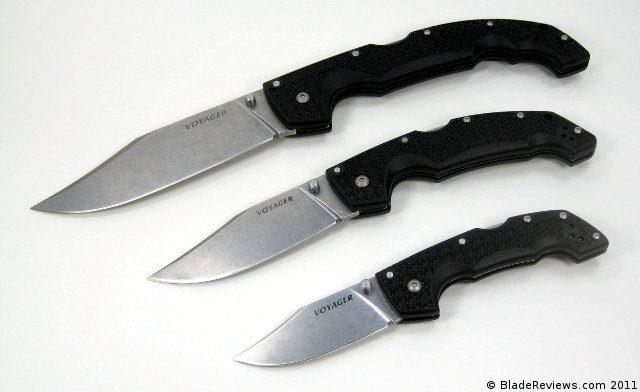
Buy the Cold Steel Voyager at BladeHQ
I have one of each size for your consideration here (the Medium Voyager, Large Voyager, and the XL Voyager). After testing them all I can safely recommend any one of these knives. Take the “voyage” with me and learn why I like them so much.
General Dimensions and Blade Details
Since I’m reviewing 3 knives here I figured it would be easiest to throw the dimensions into a table instead of listing them out.
| Model: |
Blade Length
|
Overall Length
|
Weight
|
| Extra Large |
5-1/2″
|
12-1/4″
|
7.2 oz
|
| Large |
4″
|
9-1/4″
|
4.6 oz
|
| Medium |
3″
|
7-1/4″
|
3.1 oz
|
All the knives feel light for their size. Especially the Large and XL.
The 2011 Voyagers come in 3 major blade shapes. You have the classic clip point shown here, you also have a nice tanto version, and a version known as the “Vaquero.” The Vaquero is a modified clip point with a serious recurve. The knife you decide on comes down to your personal preferences. I think they are all pretty good, but the Vaquero will the hardest to sharpen due to the extreme recurve. I probably should have bought one of each blade style, but what can I say, I’m a sucker for a nice clip point.
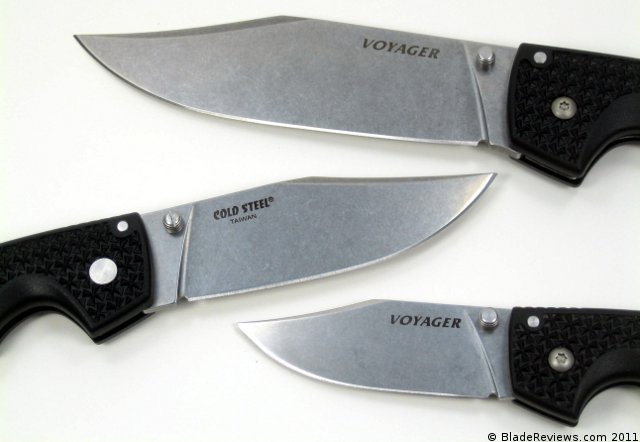
And this clip point is really well done. Cold Steel started things off with a full flat grind. You also have a small swedge that forms a nice tip. There is plenty of belly and the edge is beautifully ground. Topping things off is an excellent stone wash. This blade finish really sets this knife apart. I greatly prefer the stonewash over Cold Steel’s teflon coating or blasted finish blades. All said and done the blade is really nice, especially when you consider the modest price tag.
Steel on the 2011 Voyagers is AUS 8. This changed to BD1 in 2015-2016. Both are softer steels. Cold Steel got a lot of feedback from customers wanting something with better edge retention than AUS-8, so they upgraded their premium line of knives to CTS-XHP (and then S35Vn in 2018), and their more budget oriented knives they upgraded to BD1. I don’t have a lot of experience with BD1, but it’s a softer steel. Easy to sharpen, and presumably holds a better edge than AUS-8. I think it was a good option for the Voyager series as the price is still reasonable.
Handle, Ergonomics, and Pocket Clip
The handle on the Voyager is a combination of grivory (Cold Steel’s proprietary high density plastic) over aluminum liners. Aluminum strikes me as a great choice for liner material here. It’s been hardened so we have good strength, and it’s nice and light. Grivory on its own is pretty tough stuff too, so we are left with a very robust handle design.
In addition to the materials, I’m a big fan of the way these handles have been put together. Everything is screwed together for easy take down. The aluminum liners are neatly nested into the grivory. Everything lines up well and has been well finished. This is a high quality handle and it really shows.
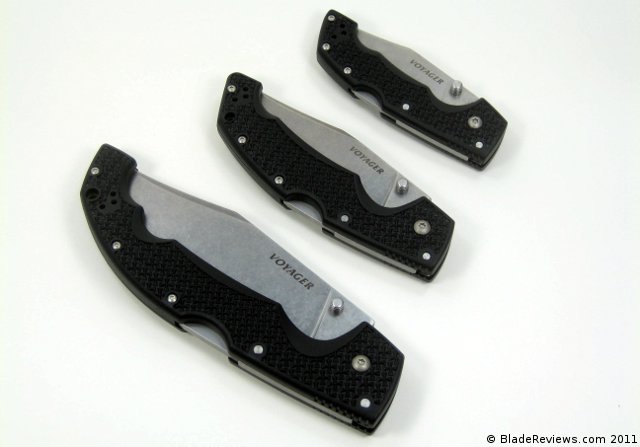
The ergonomics on the entire Voyager line are also very nice. Naturally you would expect the XL to work in your hand (and it does, in a variety of positions). The Large also functions quite well. The Medium had me most concerned as it was the smallest and was a knife I wanted to EDC. Poor ergos would have kept me from doing that. Thankfully, I was pleasantly surprised with how well the Medium fit in my hand. I wear a large glove and the Medium rested comfortably, with my pinky taking residence on the shelf making up the back part of the handle. I was even able to choke up a little (which I only recommend for light tasks). All the knives have deep finger choils and light jimping on the spine which give you a nice grip.
Speaking of grip, all of the knives feature a kind of “iron cross” pattern on the grivory. This pattern is nice and grippy, but is not so abrasive that it tears up my pockets (although some people have had some issues with this – which sanding lightly under the clip would fix). All the corners have been rounded and all the knives fill the hand really well. All in all I am very satisfied with the ergonomics on these knives.
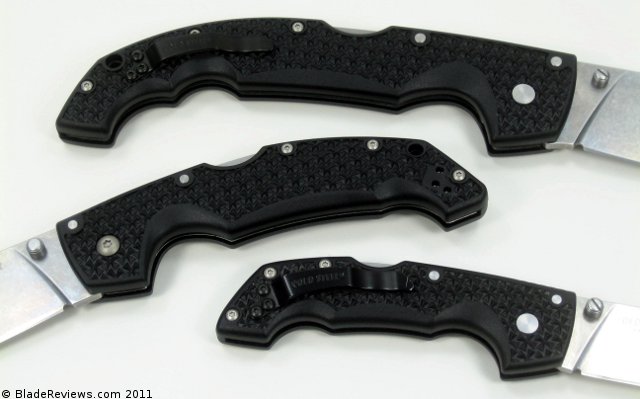
The pocket clip on the Voyager generally great, but comes kind of stiff. It worked well with the thin shorts I wear down here in Florida, but I found the stiff clip a bit of a pain with thicker materials. However, it will naturally bend out with use, and if you want to you could always bend the clip out slightly yourself. You can only carry this knife in the tip up position, but I like how Cold Steel included 2 clips (for left or right side carry). I also like how CS gave these clips a black coating. The coating held up well in my 2 months of carry, although it finally started to wear off when I scraped it on some concrete.
As far as actual carry goes, the Voyagers are pretty good considering their size. They are thicker knives, and the Large and XL are quite big, but they are very light so they are more manageable than they appear. I know several people who regularly carry an XL around and I gotta admit the knife slips into my jeans really well. Between the three sizes the Medium Voyager was my personal favorite for every day carry. The stiff clip kept the knife in place in my pocket. All in all these knives carry well.
Deployment and Lockup
The Voyagers all use ambidextrous thumbstuds for deployment. They are good size thumbstuds, and it doesn’t take much effort to get any of the knives open (even the XL). I had my concerns that the backspring on the tri-ad lock would be too strong for easy deployment, but it really isn’t the case. I can even shake these knives open (with a good amount of force). CS put some high quality phosphor bronze washers in these knives and they feel very smooth. All in all I’m quite pleased with deployment.
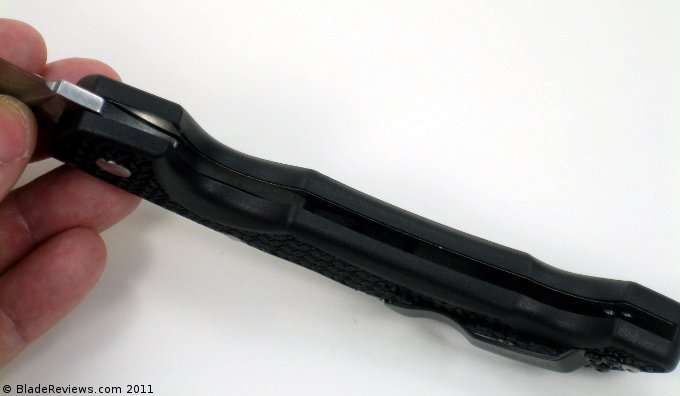
All of the Voyagers feature the now legendary Tri-Ad lock. I’ve spoken at length about these locks. They are basically an improved backlock. They actually feature a stop pin, so any force applied to the blade goes to the stop pin instead of the rest of the lock. This feature, combined with a very beefy lockback, make the strongest lock on the market. Performance is excellent – to the point where these knives will almost act like a fixed blade.
But perhaps the biggest positive to these particular Tri-Ad locks is how Cold Steel adjusted the back spring. The Tri-Ad locks on both my Spartan and Hold Out II were very stiff. It took a lot of effort to disengage these locks, even after breaking them in. I was really concerned this would be the case for the Voyager. Again, I was absolutely wrong (man, sometimes it’s great to be wrong). The locks were very easy to disengage with one hand. Of course, they are still safe and stay locked when you want it locked, but when the time comes to put the knife back in your pocket, it won’t take a ton of pressure to disengage the lock bar. This is a huge win for the Voyagers.
Cold Steel Voyager Review – Final Thoughts
Cold Steel has really raised the bar here. The entire Voyager line is extremely well done. These are Taiwanese knives and I’ll tell you the fit and finish is fantastic. The various Voyagers sell in the $40-65 range depending on the size. At that price I think it’s a great value. Especially the Large Voyager. It’s hard to find a full size utility knife built this well at this ~$50 price point.
I continue to be impressed with how perfectly everything lines up, how wonderfully everything has been finished, and how smooth the deployment, lockup and disengagement is. From a design standpoint there is a lot to like. The great choice of blade shapes, the comfortable lightweight handles, the excellent lock, the awesome pocket clip, the great materials – I could go on and on.
So in conclusion, I like the Voyager series lot. It was one of the best releases in 2011, and when the upgraded the steel in 2016 they made the knives even better. In 2018 I still have my Medium Voyager. I find it a little thick for EDC, but it’s a hell of a work knife. If you are looking for a large utility knife then pick up a Large Voyager. Tough to beat. And if you are looking for a folding sword then snag the XL. The XL is a fun knife, but it’s not a gimmick.
- Blade Length: 3-Inch
- Blade Thickness: 3 mm
- Overall Length: 7 1/4-Inch
- Weight: 3.5 oz (approx.)
- CLIP POINT BLADE - Lightweight, comfortable, and super sharp, the Cold Steel Voyager Large Clip Point folding knife is rugged, dependable and perfect for hunting and camping as well as general utility and daily cutting chores
- AUS10A STEEL BLADE - The Cold Steel Voyager Large folding knife's blade is crafted from premium Japanese AUS10A steel, renowned for its outstanding corrosion resistance and remarkable ability to maintain a sharp and durable edge over time
- ERGONOMIC HANDLE - The ergonomic Griv-Ex handle is reinforced with heat-treated 6061 aluminum liners to ensure ultimate durability; This handle provides great comfort and a secure grip even under extended use in tough conditions
- TRI-AD LOCK - Equipped with Cold Steel's renowned Tri-Ad locking mechanism, the Voyager Large folding knife offers unparalleled strength and shock resistance; This locking mechanism enhances the knife's reliability and safety during heavy-duty tasks
- SPECS - Weight: 5 oz (141.7 g); Blade Thickness: 3.5 mm; Blade Length: 4"; Blade Steel: AUS10A; Handle Length/Material: 5.25" Griv-Ex; Overall Length: 9.25"; Knife Type: Folder; Blade Shape: Clip Point; Locking Mechanism: Tri-Ad Lock
- Blade thickness: 4 mm, Blade Length :- 5.5 Inches
- Handle: 6.75 Inches long. Griv-ex
- Blade style: Clip point
- Steel: carpenters cts Bd1 alloy with stone wash finish
- Pocket Clip: ambidextrous pocket/belt Clip
I recommend purchasing the Cold Steel Voyager at Amazon or Buy the Cold Steel Voyager at BladeHQ. Please consider that buying anything through any of the links on this website helps support BladeReviews.com, and keeps the site going. As always, any and all support is greatly appreciated. Thank you very much.
